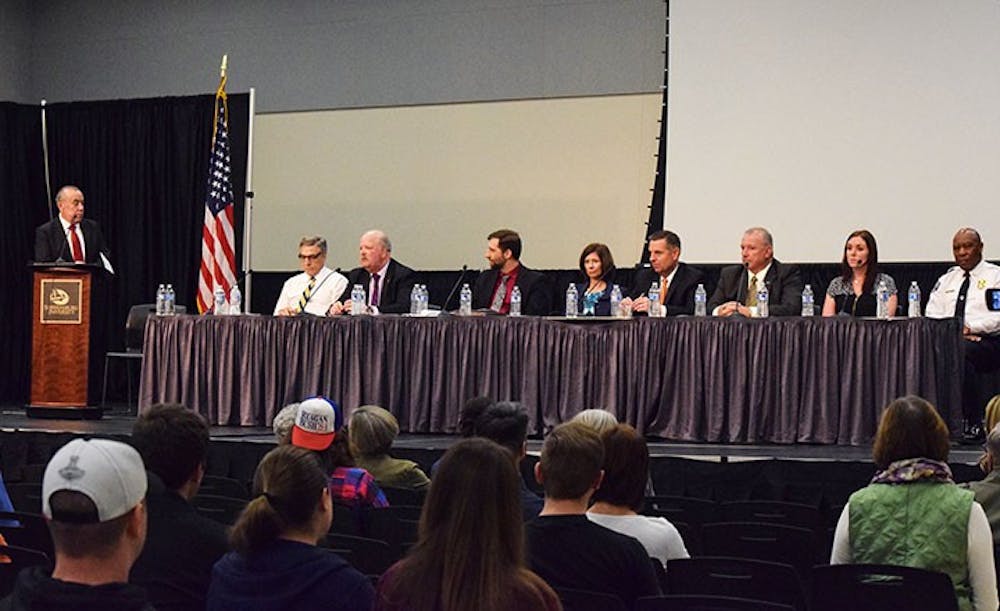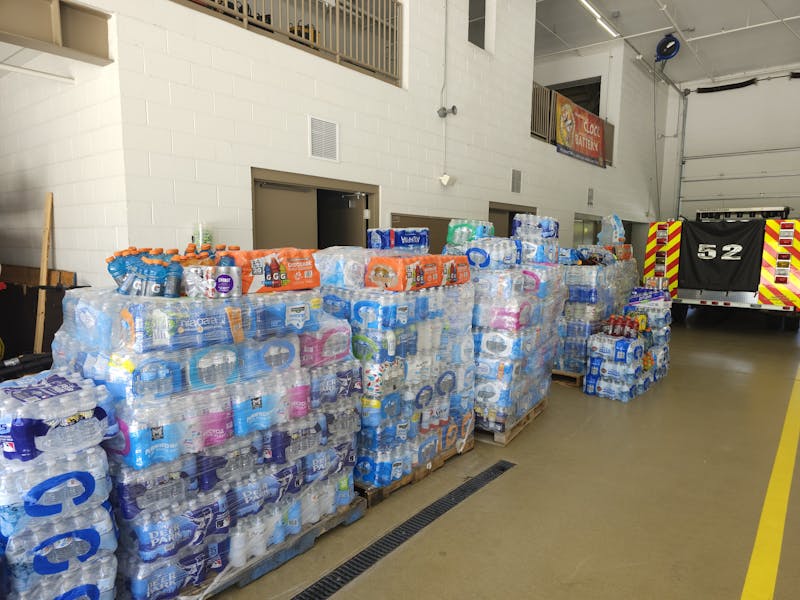In 2016, 3,500 Pennsylvanians died due to prescription overdoses. As a result of the growing number of drug users in Pennsylvania, the state hosted a drug education forum at Shippensburg University on Thursday.
Local, state and national leaders gathered at the Ceddia Union Building to inform students, faculty and members of the community of the dangerous drug problem Pennsylvania communities face.
The forum was hosted by U.S. Rep. Lou Barletta and Pennsylvania State Rep. Mark Keller. The event’s moderator was RJ Harris from Harrisburg’s WHP 580 radio station.
Other panelists included Dr. Carrie DeLone, Holy Spirit Medical Group Director; David Freed, Cumberland County District Attorney; Charles Hall, Cumberland County coroner; psychologist Kenneth Martz; Fred Scott, Shippensburg chief of police; and Krisin Varner, director of Training and Advocacy from the RASE Project, a drug rehabilitation center located in Harrisburg.
The reason for the epidemic, panelists explained, is unneeded prescriptions, location and mindsets.
Before 1996, narcotics were rarely used in the healthcare industry, according to DeLone. In 1996, Purdue pharmaceuticals introduced oxycodone and marketed it as a nearly non-addictive drug for chronic pain that stayed in the body for a long time. The company made $1.1 million annually by 2000.
Last year, enough prescriptions were written for every person in the United States to possess a one-month supply of narcotics. Eighty percent of heroin addictions started with prescription medication.
“The opioid epidemic is the only epidemic that was started by the pharmaceutical company and propagated by the healthcare industry,” DeLone said.
Many individuals obtain opioids for free from friends or family with leftover prescriptions, Martz said. To combat this, 580 medicine take-back boxes have been placed throughout the commonwealth, including one at SU’s police station. So far 227,000 pounds of unneeded medications have been collected in Pennsylvania.
Many panelists named Shippensburg’s location as a reason for its developing drug problem. Interstate 81 is a corridor for drugs coming from Harrisburg, Baltimore and Philadelphia, according to Scott. Young people who use drugs will come in to the borough, Scott said, and this puts a burden on the nine-person police department.
Freed said small groups of people that get involved with heroin go to cities such as Philadelphia to pick up the drugs. In some cases, a member of the group will die, overdose or get arrested and the group will break up.
“When we knew, in central Pennsylvania, that this had reached a new level was when the for-profit drug dealers moved here and located here to start selling heroin,” Freed said.
To break an addiction to heroin or opioids, Varner said a change in lifestyle is necessary. It takes a year to 18 months in long-term recovery for an individual’s brain to heal. Varner said the importance of treating someone with an addiction is the same as treating someone with a brain disease.
There are currently three recovery centers in Cumberland County: Harbor Here in Shippensburg, Just for Today in Lemoyne and the RASE Project in Carlisle.
“People, until they’re actually affected by it, usually don’t learn about it,” Varner said.
Martz encouraged the audience to purchase Naloxone, a drug that can reverse the affects of an opioid overdose.
The drug attaches to the same receptors as the opiate and subsequently reverses the sensation, allowing the individual to breathe again, DeLone said. Naloxone, however, wears off after 20 minutes and requires additional consumption to prevent an overdose.
Barletta reiterated the importance of public awareness about the crisis facing the community.
“Awareness is the very first step, Barletta said. “That’s why we’re doing this. It’s to bring awareness to our communities so we can fight this together.”




The Slate welcomes thoughtful discussion on all of our stories, but please keep comments civil and on-topic. Read our full guidelines here.